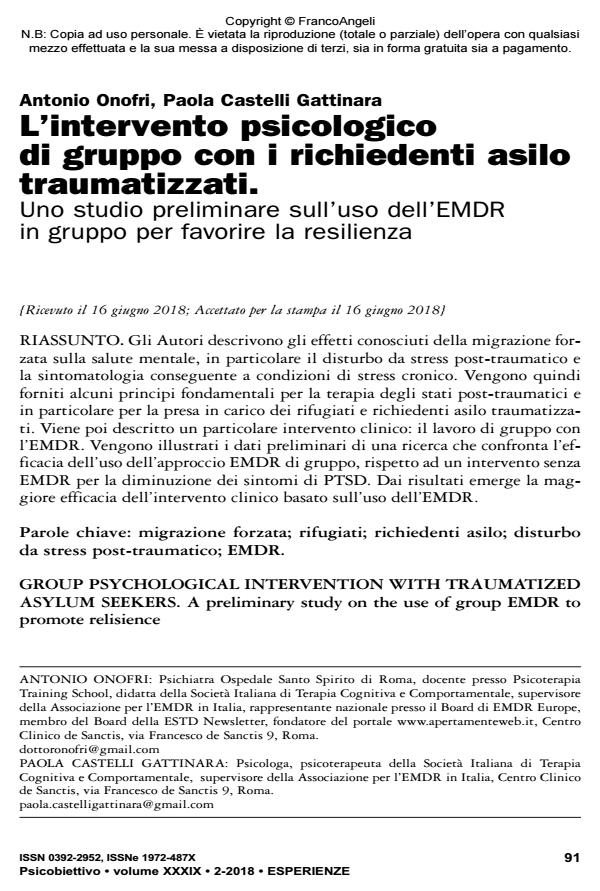L’intervento psicologico di gruppo con i richiedenti asilo traumatizzati. Uno studio preliminare sull’uso dell’EMDR in gruppo per favorire la resilienza
Titolo Rivista PSICOBIETTIVO
Autori/Curatori Antonio Onofri, Paola Castelli Gattinara
Anno di pubblicazione 2018 Fascicolo 2018/2
Lingua Italiano Numero pagine 10 P. 91-100 Dimensione file 145 KB
DOI 10.3280/PSOB2018-002006
Il DOI è il codice a barre della proprietà intellettuale: per saperne di più
clicca qui
Qui sotto puoi vedere in anteprima la prima pagina di questo articolo.
Se questo articolo ti interessa, lo puoi acquistare (e scaricare in formato pdf) seguendo le facili indicazioni per acquistare il download credit. Acquista Download Credits per scaricare questo Articolo in formato PDF

FrancoAngeli è membro della Publishers International Linking Association, Inc (PILA)associazione indipendente e non profit per facilitare (attraverso i servizi tecnologici implementati da CrossRef.org) l’accesso degli studiosi ai contenuti digitali nelle pubblicazioni professionali e scientifiche
Gli Autori descrivono gli effetti conosciuti della migrazione forzata sulla salute mentale, in particolare il disturbo da stress post-traumatico e la sintomatologia conseguente a condizioni di stress cronico. Vengono quindi forniti alcuni principi fondamentali per la terapia degli stati post-traumatici e in particolare per la presa in carico dei rifugiati e richiedenti asilo traumatizza- ti. Viene poi descritto un particolare intervento clinico: il lavoro di gruppo con l’EMDR. Vengono illustrati i dati preliminari di una ricerca che confronta l’efficacia dell’uso dell’approccio EMDR di gruppo, rispetto ad un intervento senza EMDR per la diminuzione dei sintomi di PTSD. Dai risultati emerge la maggiore efficacia dell’intervento clinico basato sull’uso dell’EMDR.
Parole chiave:Migrazione forzata; rifugiati; richiedenti asilo; disturbo da stress post-traumatico; EMDR.
Antonio Onofri, Paola Castelli Gattinara, L’intervento psicologico di gruppo con i richiedenti asilo traumatizzati. Uno studio preliminare sull’uso dell’EMDR in gruppo per favorire la resilienza in "PSICOBIETTIVO" 2/2018, pp 91-100, DOI: 10.3280/PSOB2018-002006